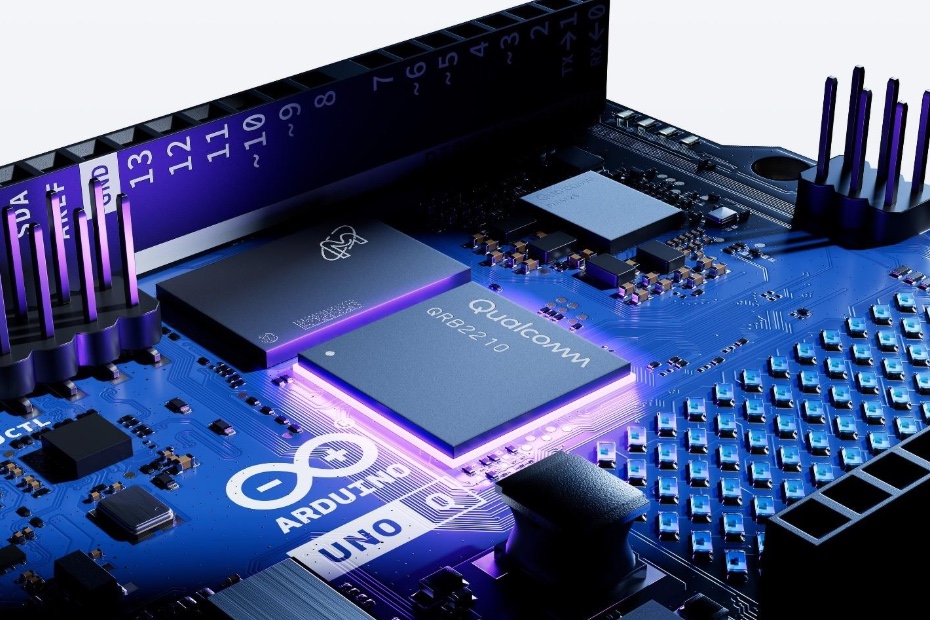Qualcomm is continuing its acquisition spree, and its latest target is none other than Arduino: the firm has been snapped up for an undisclosed sum, the biggest user-facing outcome of which is the release of a brand-new Arduino UNO powered by a Qualcomm Dragonwing system-on-chip — turning the iconic development board into a fully standalone Linux-based single-board computer dubbed the Arduino UNO Q.
"Qualcomm has always been focused on differentiation at the edge," Nakul Duggal, Qualcomm's group general manager for automotive, industrial, and embedded Internet of Things (IoT), claimed during a press briefing on the acquisition. "Over the last year we have made a number of different acquisitions — the last one was Edge Impulse, which was a machine learning ops platform. Prior to that we acquired Foundries.io and today this conversation with Arduino and the Arduino ecosystem completes our strategy to be able to scale [and] deliver the best experiences to the developer community."
While the acquisition, financial terms of which have not been disclosed, will see Arduino become a wholly-owned subsidiary of Qualcomm, both companies say that things will business as usual: Arduino will continue to support its existing product lines regardless of chip vendor, including the recently-launched Arduino UNO R4 family with its Renesas microcontroller. "Arduino will continue to operate, support all of its existing partnerships, its existing products, and continue to support new products as it has been," Duggal explained in response to our questions during the event. "Our focus is going to be on the SoC families that we support today, so nothing is going to change as far as how the Arduino operating model continues."
Qualcomm's primary influence, then, will be in providing Arduino with access to its own system-on-chip designs — but not, if the company is to be believed, forcing it to use them over rival vendors' parts. The first fruit of this partnership: the Arduino UNO Q, a brand-new development board in a familiar form factor — hiding the functionality of a fully standalone Linux-capable single-board computer, something closer to a Raspberry Pi than the earlier models in the Arduino UNO range.
The new board uses a "dual brain" architecture, combining a Linux-capable Qualcomm Dragonwing chip with an STMicro STM32 coprocessor. (📷: Arduino)
"It is the most capable Arduino UNO ever," Marcello Majonchi, Arduino's chief product officer, claimed of the new board during the event, "thanks to its hybrid 'dual brain,' we call it, architecture, that is combining a Qualcomm chip [and] STMicro[electronics] MCU [Microcontroller Unit]. It's Linux, the Debian operating system, combined with an Arduino core running on Zephyr [real-time operating system]. More importantly, with Arduino UNO Q we are introducing Arduino App Lab, which is a brand-new integrated development experience that joins together development across the microcontroller, the microprocessor, and the GPU [graphics processing unit], then is integrating the traditional sketch development of Arduino with programming directly on the Linux subsystem with Python and integrates, also, AI models."
On the hardware side, the Arduino UNO Q packs a lot of power into the classic Arduino UNO footprint. Its main chip is the Qualcomm Dragonwing QRB2210, which includes four 64-bit Arm Cortex-A53 cores running at up to 2GHz, an Adreno graphics processor with 3D acceleration capabilities, and an image signal processor (ISP) capable of handing two 13 megapixel or one 25 megapixel video stream at 30 frames per second. There's 2GB of LPDDR4 memory and 16GB of eMMC storage with the Debian-based operating system pre-loaded, with a 4GB/32GB variant planned for release later in the year. Both models include dual-band Wi-Fi 5 and Bluetooth 5.1 connectivity.
The App Lab allows you to develop Linux apps, microcontroller sketches, and machine learning implementations in one place. (📷: Arduino)
The microcontroller side of things is handled by an STMicro STM32U585 microcontroller as a real-time coprocessor, featuring a single 32-bit Arm Cortex-M33 core running at up to 160MHz, 768kB of static RAM (SRAM), and 2MB of flash memory. It's this which is wired into the Arduino UNO-format pin headers on the top of the board, while the Qualcomm chip handles a brand-new pair of high-density board-to-board connectors on the underside — which will, we're told, be compatible with a range of carrier boards, including a display carrier, launching in the near future.
Elsewhere on the board are four user-controllable RGB LEDs, an 8×13 blue LED matrix, a Qwiic-compatible 3.3VDC I2C expansion connector, a user-addressable push-button switch, and a remote debug connector for the microprocessor side of things. There's support for USB cameras and video output via a USB Type-C connector's alternate function mode; a JMEDIA header provides a pair of MIPI Camera Serial Interface (CSI) inputs and a single MIPI Display Serial Interface (DSI) output. Other interfaces include audio in and out, I2C, I3C, SPI, CAN, UART, PSSI, and general-purpose input/output (GPIO) pins with analog to digital conversion (ADC) and pulse-width modulation (PWM) support.
The familiar UNO headers offer compatibility with existing shields, while new board-to-board connectors will link to yet-to-launch carrier board add-ons. (📷: Arduino)
All of this is designed to be accessed through the new Arduino App Lab, which takes over from the existing Arduino IDE and provides an all-in-one development environment for handling both the microcontroller side (in Wiring-flavored C) and the microprocessor side (in Python). This, Majonchi explained, can be used in two modes: a traditional tethered development environment in which the Arduino UNO Q connects to a Microsoft Windows, Apple macOS, or Linux host over USB; and a fully standalone mode, in which a monitor, keyboard, and mouse is connected to the Arduino UNO Q and the App Lab environment runs directly on the single-board computer itself — though for this users will need a suitable USB Type-C docking station, at least until Arduino gets around to releasing a carrier board with sufficient connectivity.
There's a third string to the App Lab bow, too: integration with Edge Impulse, another recently-acquired Qualcomm subsidiary. "Arduino App Lab comes with already dozens of pre-loaded application examples," Majonchi told us. "There are also several AI models that are pre-trained and already integrated [as] examples, but also available to use in custom applications […] that are spanning across all different use cases from computer vision to sound, speech detection, to signal processing, in order to enable any type of use-cases from home automation to industrial robotics. And these models are actually provided by our partner Edge Impulse, and developers can also custom-train their models with an active integration within Edge Impulse."
The App Lab comes with a range of examples, including pre-trained and customizable machine learning models from Edge Impulse. (📷: Arduino)
Perhaps the most welcome surprise of the joint announcement is that the Arduino UNO Q will continue the Arduino tradition of open-source development: the software will be made available under either the reciprocal GNU General Public License 3 or the Mozilla Public License, the companies have confirmed, while schematics and hardware design files will be released under a Creative Commons Attribution-ShareAlike 4.0 license that includes the ability to release clones and custom derivatives commercially — a win for Qualcomm, of course, as it would supply the Dragonwing chips powering all these third-party takes on the design.
The Arduino UNO Q is now available to order in 2GB/16GB form from the Arduino Store and official resellers at $44, with shipping beginning on 25 October; the 4GB/32GB variant will open for orders in November at $59 with a view to shipping "by end of year," Arduino has promised.
Freelance journalist, technical author, hacker, tinkerer, erstwhile sysadmin. For hire: [email protected].
.png)




